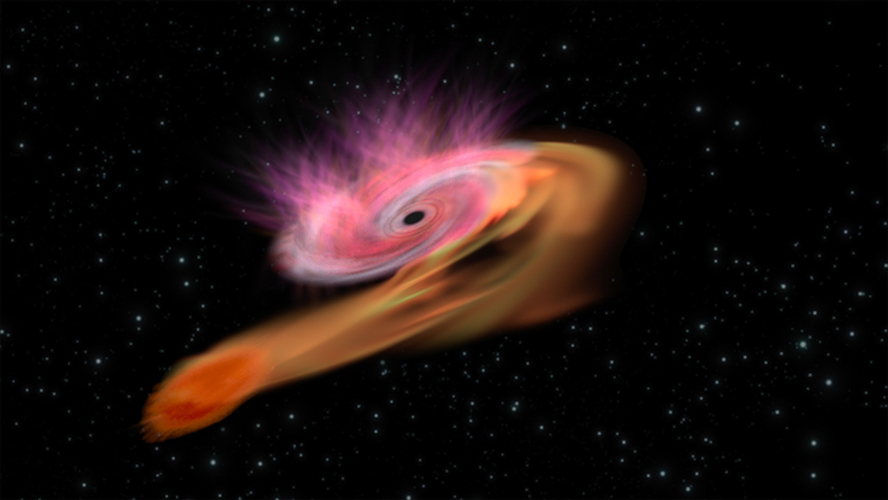
 Credit: ESA/C. Carreau
Credit: ESA/C. Carreau
The Prince of Tidal Disruptions
Space can be a dangerous place with many pitfalls. Stars staggering too close to a black hole, for example, may be torn out of existence, and out of the Universe entirely. A black hole's insatiable gravity means that any object that gets too close will feel an incredibly strong differential gravity between the side facing the black hole and the side facing away from the black hole. This tidal force will stretch the star, pulling it apart, and the star's matter will spiral down into the black hole, producing characteristic radiation. But does this really happen? Astronomers have recently identified a transient source, called ASASSN-14li in an optical search for supernovae. However, the characteristics of this source were intriguing: it appeared near the center of its host galaxy, and, the decay of the UV light from the source, along with the particulars of its X-ray emission, indicated that the transient was not a run-of-the-mill supernovae, but probably the result of the tidal disruption of a star by an otherwise fairly dormant supermassive black hole, like that shown in the illustration above. This event, and others that have been identified, are helping astronomers understand the warped spacetime near a black hole, and the effects this has on infalling matter.
Published: October 26, 2016
<
HEA Dictionary ● Archive
● Search HEAPOW
● Other Languages
● HEAPOW on Facebook
● Download all Images
● Education ● HEAD
>

Each week the HEASARC
brings you new, exciting and beautiful images from X-ray and Gamma ray
astronomy. Check back each week and be sure to check out the HEAPOW archive!
Page Author: Dr. Michael F. Corcoran
Last modified Tuesday, 27-Feb-2024 10:15:22 EST


